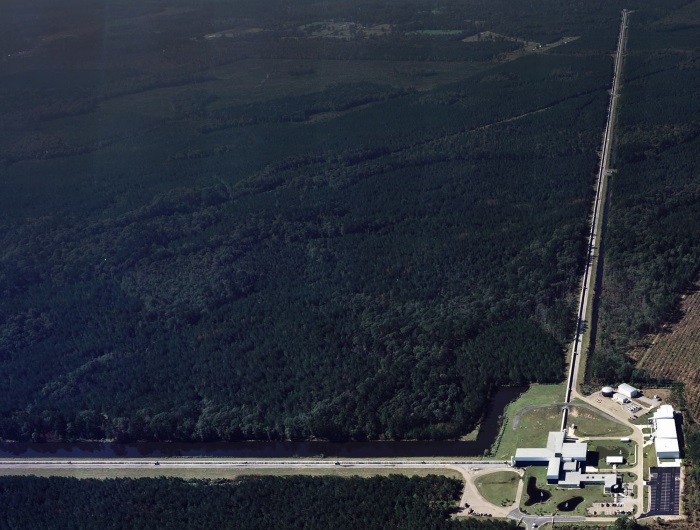Advanced LIGO
Advanced LIGO

Advanced LIGO consists of interferometric gravitational-wave detectors at two sites, one in Hanford (Washington State, USA) and one in Livingston (Louisiana, USA). At the turn of the century IGR scientists worked within the LIGO Scientific Collaboration to propose methods and designs that would allow at least 10 times greater sensitivity than the initial LIGO detectors, vastly extending their science potential. In particular, two Glasgow-originated and developed technologies were selected as essential elements of the design: quasi-monolithic fused silica suspensions and signal recycling. Both of these techniques were essential features of the German-British GEO600 detector.
Our next step was to contribute detector hardware in time for the first Advanced LIGO observing run in 2015. In 2003, project funding was awarded by PPARC (now STFC) - grants of £7.2M to Glasgow University and £1.4M to Birmingham University. The Advanced LIGO UK (ALUK) project team, which also includes Strathclyde University and the STFC Rutherford Appleton Laboratories, developed, built and delivered all the main suspensions for the Advanced LIGO interferometers. We also designed and supplied associated optical components, and all the sensors, actuators, electronics and, even more important, the expertise required to install and interface the suspensions to the rest of the detector.
Led from Glasgow, the ALUK team developed quasi-monolithic suspensions meeting every performance and reliability specification set by the project system scientists and engineers. This necessitated state-of-the-art material-science, novel bonding techniques and the development of ultra-strong fused silica suspension fibres (Glasgow); sophisticated engineering of many thousands of mechanical parts and production engineering (RAL); development of reliable sensors, actuators and associated electronic systems (Birmingham, Glasgow, Strathclyde) and development of all the on-site equipment and tooling, training of LIGO staff, and procedures for installation.
The ALUK project was a complete success: all the suspension systems were supplied, installed and working by 2013. Close coordination between the UK and US teams during design and construction enabled integration of the complex suspensions to proceed smoothly. With subsequent "operations" funding from STFC (to 2020) the UK team continues to have responsibilities in operating and commissioning the detectors.
We helped to bring the detectors to the sensitivity required for the first two observing runs "O1" and "O2". Following O2, we are helping to upgrade the detectors to be ready for a third observing run starting late in 2018 and scheduled to last about one year. The O3 run is expected to yield many more observations, and bring an even wider range of discoveries.
